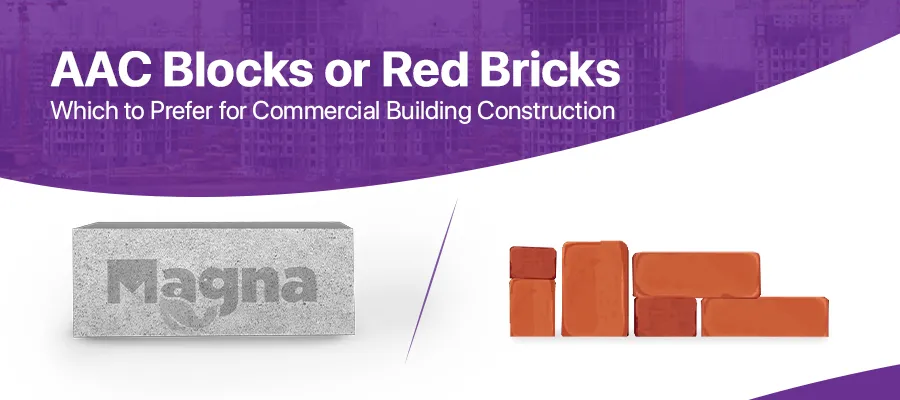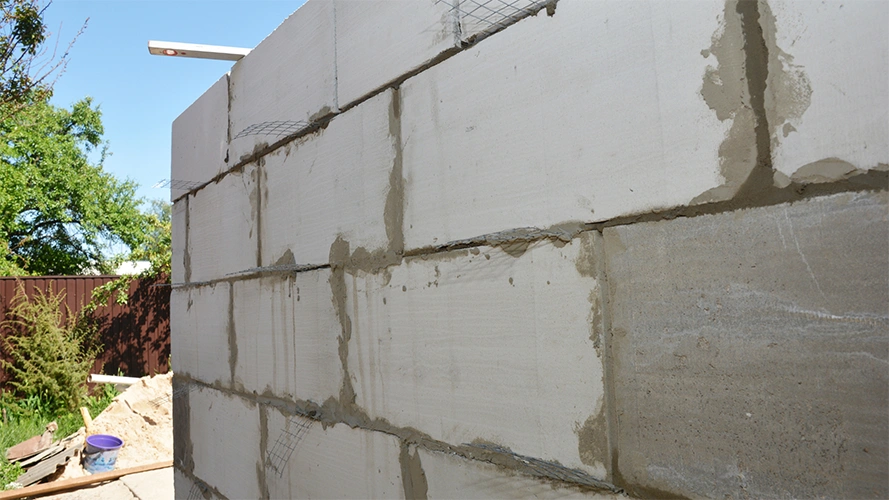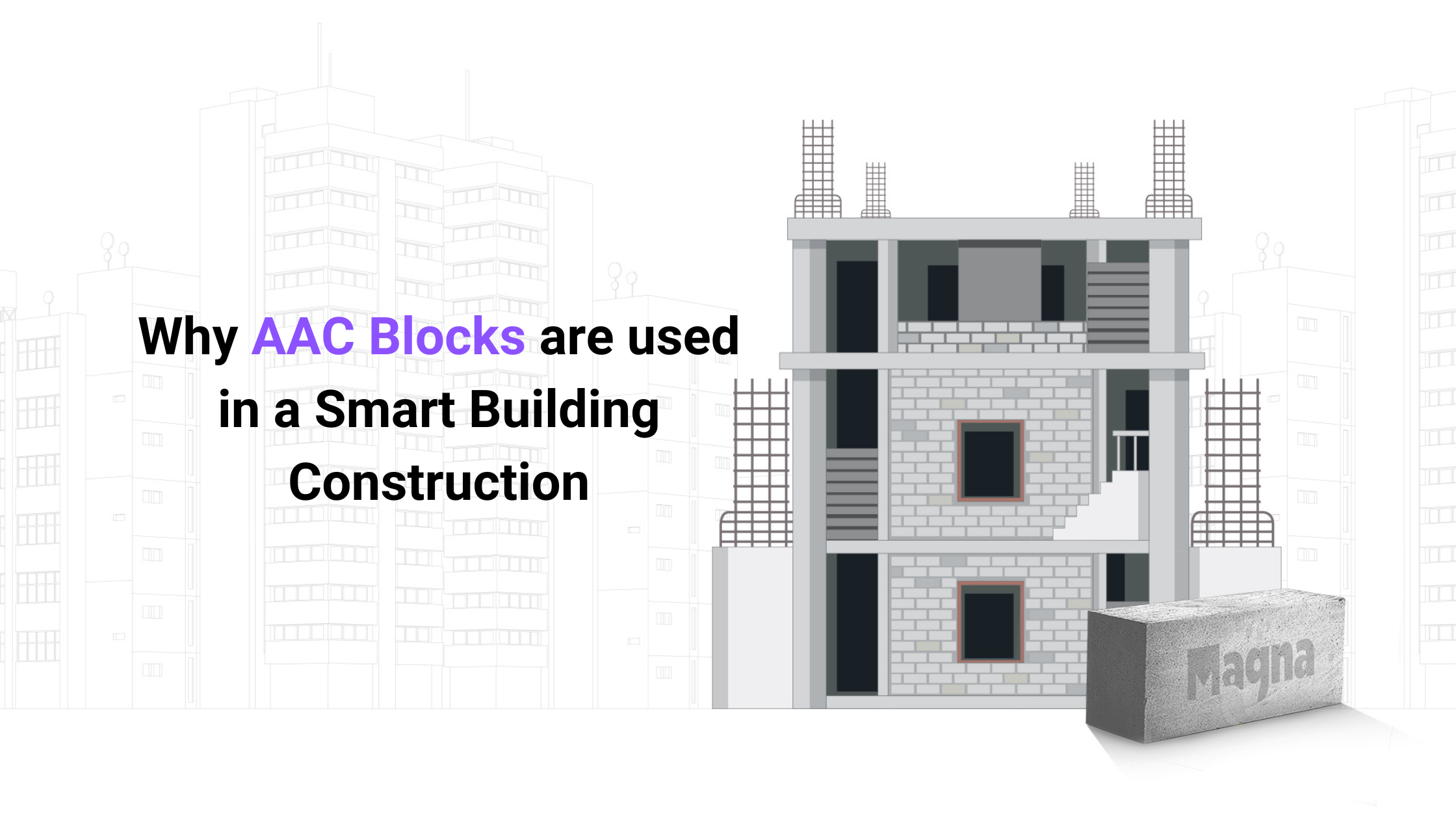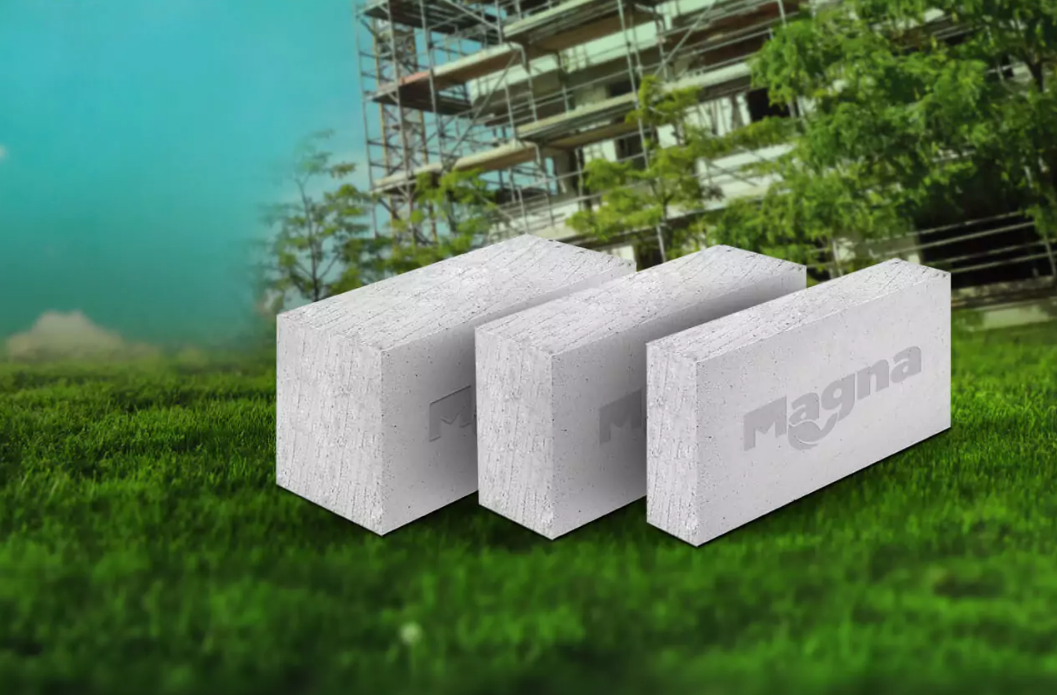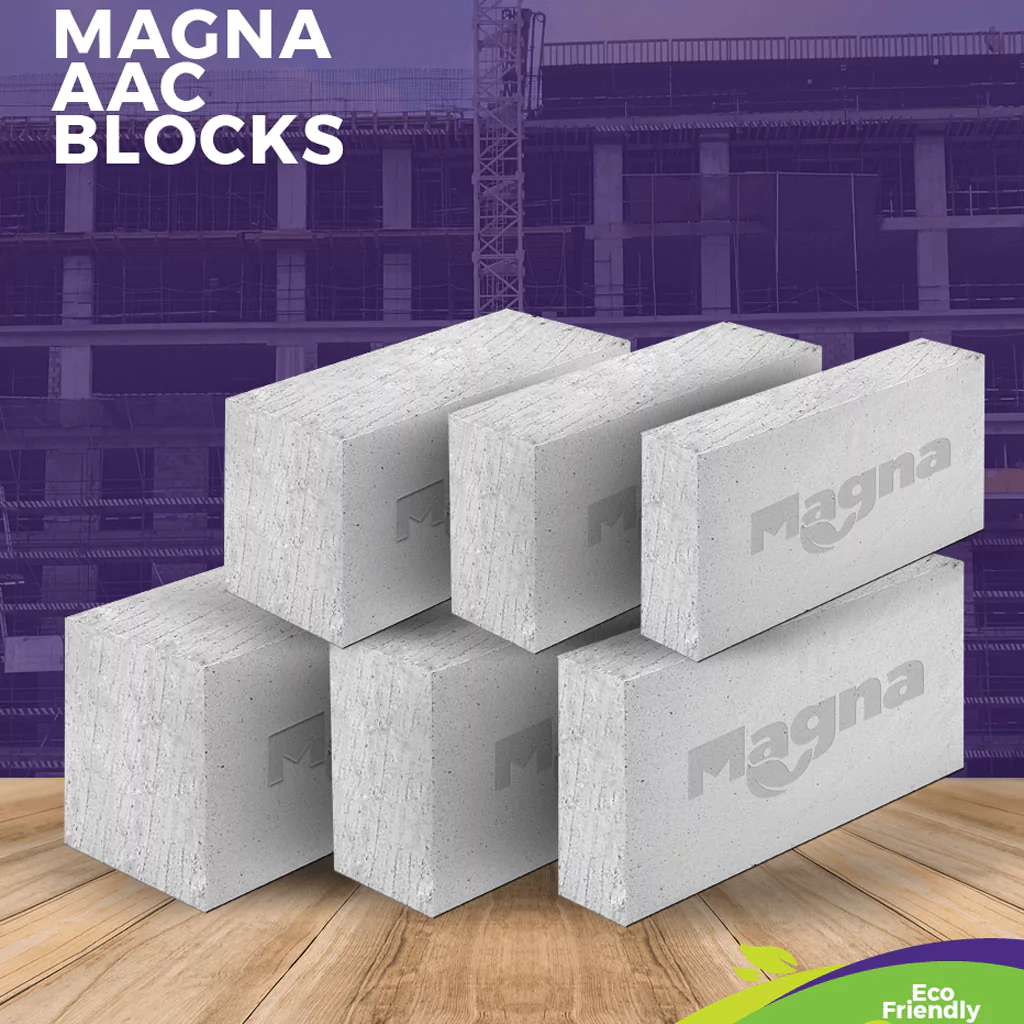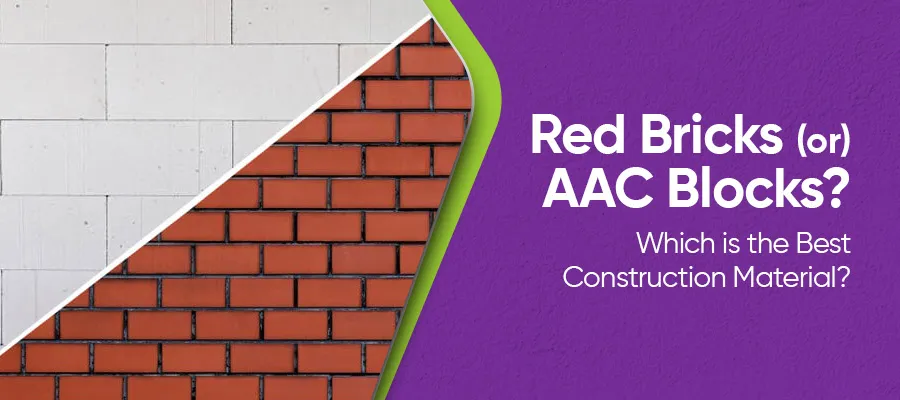
Red Bricks or AAC Blocks? Which is the Best Construction Material?
Construction building materials decide the sustainability of the building structure. Wall bricks, or blocks, are one of the essential building materials. Bricks play a significant difference in the estimation of a building's serviceability in addition to its aesthetic value.
These materials are considered to be the factor that adds the dead load to the civil structure. Reducing the dead load is an essential factor that influences the structural detailing planned by the engineers. A few decades back, engineers are left with no other options than choosing Red Bricks for constructing wall portions of a civil building.
At present, the introduction and the gradual preferences for AAC Blocks are on the rise. Technical features of the concrete block are the key influencing factors impacting the structural engineer's decision.
AAC Blocks have fulfilled the engineer's requirements for constructing the building structure. But, when it comes to the end customer's decision, the preferences vary. This article is specially penned to educate people with the most required insight on what to prefer red bricks or aac blocks.
Let us start our KT theoretical session with Red Bricks. Let's jump into the context.
Material Composition
Red clay is the primary ore material preferred in the manufacturing of clay bricks. Red soil tops the list for manufacturing bricks with defined technical properties compared to other types of available soil.
Depending on the burning process of wet clay mold, the technical properties vary. Hence, monitoring the manufacturing process from start to end is much needed. So much effort is required to ensure the strength of the brick.
Sizes
Typically, the red bricks are smaller in size. Also, the laying of clay brick molds involves manual techniques.
Consistent manufacturing of bricks of uniform sizes throughout the batch requires special attention.
The assurance of uniform size and shape differs with the manufacturers. Selecting the right manufacturers assists in saving more capital and investment.
Compressive Strength
The quality of the red brick is decided by its compressive strength. Red bricks are manufactured with a strength of 2.5 to 3.5 N/mm2.
The greater the strength, the higher the durability. But, the manufacturing technique influences the compressive strength, and the inconsistent burning of clay bricks leads to the rise and fall of the technical properties, which differ from brick to brick.
Insulation Properties
The insulation properties are the significant drawbacks of clay bricks. These bricks failed to resist the downfall of thermal transition prevailing in the outdoor environment.
Irrespective of the masonry pattern and joint mortar, the wall constructed with red bricks collapses when an earthquake hits it. Also, a noisy environment can be observed indoors, which leads disturbed environment.
Now, let us discuss the competitive advantage of AAC Blocks over the red bricks.
Materials
The raw materials used to manufacture AAC Blocks are fly ash, lime, cement, gypsum, and aeration agent. Concrete has delivered proven technical properties when preferred in constructing other building structures.
The changes in the proportional mix of the concrete block offer its competitive edge of desired technical properties that can be achieved in every single unit manufactured.
The production process is entirely automated; hence, the errors are restricted to the maximum possible extent.
Sizes
The mold preferred in the production of AAC Blocks is machine mold.
Hence, it is possible to manufacture the AAC Blocks of uniform dimension.
Therefore, these blocks enhance the masons in constructing the wall with an absolute finish, improving the building aesthetic.
The size of the AAC Blocks is larger than the conventional clay bricks, which assists the investor in optimizing the investment by reducing the volume of blocks quoted for the complete construction of the wall structure.
Compressive Strength
The end customers made up their minds with the myth that AAC Blocks are inefficient in achieving the desired compressive strength. The compressive strength of the AAC Blocks is higher than the clay bricks.
Hence there is no doubt that the wall constructed with concrete blocks service longer than red brick walls. The compressive strength of the AAC Blocks is 3 to 4.5 N/mm2.
The cement grade and proportional mix are the key differentiators to deliver the blocks with strength. Ensure the cement grade preferred in manufacturing AAC Blocks to procure the construction materials with the desired compressive strength.
Insulation Properties
AAC Blocks have a competitive edge in delivering insulation properties. It is highly resistant to earthquakes, sound, and temperature.
These properties have upscaled the preference for concrete blocks over clay bricks. The wall withstands daily weather conditions of all seasons without deteriorating the wall service life.
Conclusion
We hope this article has provided you with helpful information. It has been clear that choosing AAC Blocks over red bricks will be the best decision to make for constructing highly sustainable building structures. Magna Green Building Materials is one of the most reliable AAC Blocks manufacturers offering ace-grade concrete blocks with pre-defined technical specifications fulfilling your requirements.


